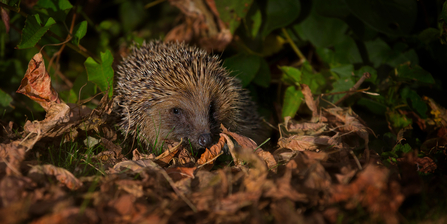
Wildlife gardening in July
Make a log pile in your garden. Photo by Scott Petrrek

Not so dead wood
Deadwood is an easy addition for your garden and can easily be tucked out of sight for those gardeners who are a little neater than others.
Hiding a log pile behind a compost bin or in the corner of your border behind those fashionable variegated grasses will be no deterrent to the animals that choose to use it. The main thing to remember is to place deadwood in areas of your garden that are not overly busy and allow routes for creatures like frogs to be able to reach them easily and under the cover of plants.
Create a wood pile with some logs stood on end and others laid down. Partly or fully burying the logs at the bottom will benefit an additional range of beetles (such as stag beetles), amphibians and possibly even reptiles if you’re lucky. Log piles are used by amphibians to hibernate over winter as they are damp but more stable in temperature than the surrounding environment, so it is important not to move the log pile once created.
If you're cutting a tree down, can you leave some of the trunk in place to become standing deadwood? You can either hide this behind new planting or make it into a feature. If you want to cut the tree to the ground then leaving the stump in situ will still provide benefits. Where safe to do so, leave any dead branches on your garden trees or shrubs.
Make a simple log pile for wildlife (https://youtu.be/z4uyHFrR8AY)
Make a simple log pile for wildlife

Hedgehog © Jon Hawkins - Surrey Hills Photography
Strimming advice
Always check grass before strimming borders; hedgehogs love hiding in long grass and will not run off if faced by a strimmer, they will instead curl up and potentially suffer terrible injuries. This is one of the most common injuries treated at wildlife rescues, and one that can be easily preventable.

Small mammal water station
Provide water for wildlife
Water is essential for wildlife to thrive, but it isn’t just for drinking. Amphibians like newts, frogs and toads use water as shelter and breeding grounds. Butterflies get valuable minerals and salts from slightly muddy water, and birds use water to bathe and remove parasites.
Just about any stand of water in your yard, from a tiny puddle to a pond, will be used by one kind of animal or another. To make it as appropriate as possible, ensure your water source is shallow with gradual and rough-textured edges, so that anything that climbs in can get out again.

